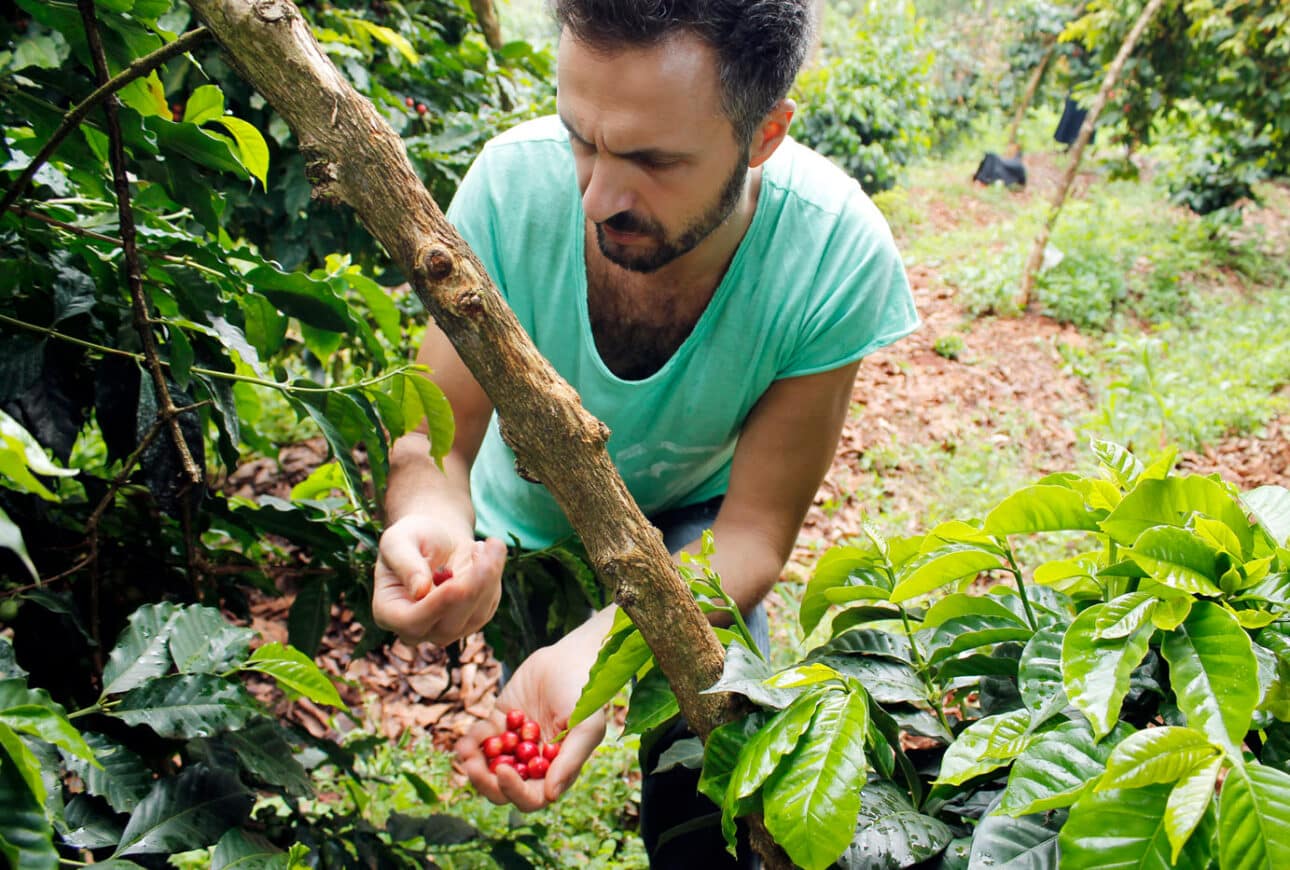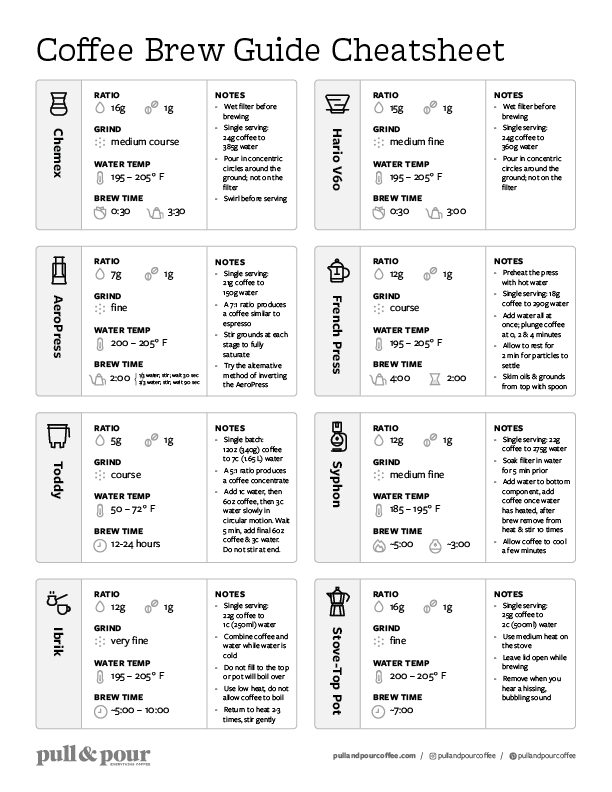This article was co-written by Andrew Pautler of Pull & Pour and Ivica Cvetanovski of Coffea Circulor
In 2005, Coffea Circulor founder Ivica Cvetanovski observed the combination of coffee varieties at Kenyan coffee processing stations. This unification of coffee varieties that make up “mixed lots” at washing stations in Kenya removes the notion of “single estate” and “single variety”. Varieties such as SL28, SL34, Ruiru 11, K7, etc. were “blended” without any particular notion taken to ratio. This is mainly due to small-scale farmers/smallholder picking their cherries as a cash crop, delivering them to the closest drop-off point. Coffee cherries are often personally carried to a local coffee processing station. At the station, cherries are weighted and the producer receives a voucher based on the weight. The voucher can later be redeemed for cash, Mpasa (electronic cash), or other monetary funds. This method of post-cherry delivery payment is well established in Kenya and also incentivizes the small-scale producer to unfortunately not always pay attention to the cherries to carry a certain quality. Coffee cherries rather convey a more important heft because it simply is the weight that pays at the nearest processing station. Additionally, no particular notion is put on which varieties are picked and delivered: “the end product is coffee regardless”.
The Current Status of Coffee in Kenya
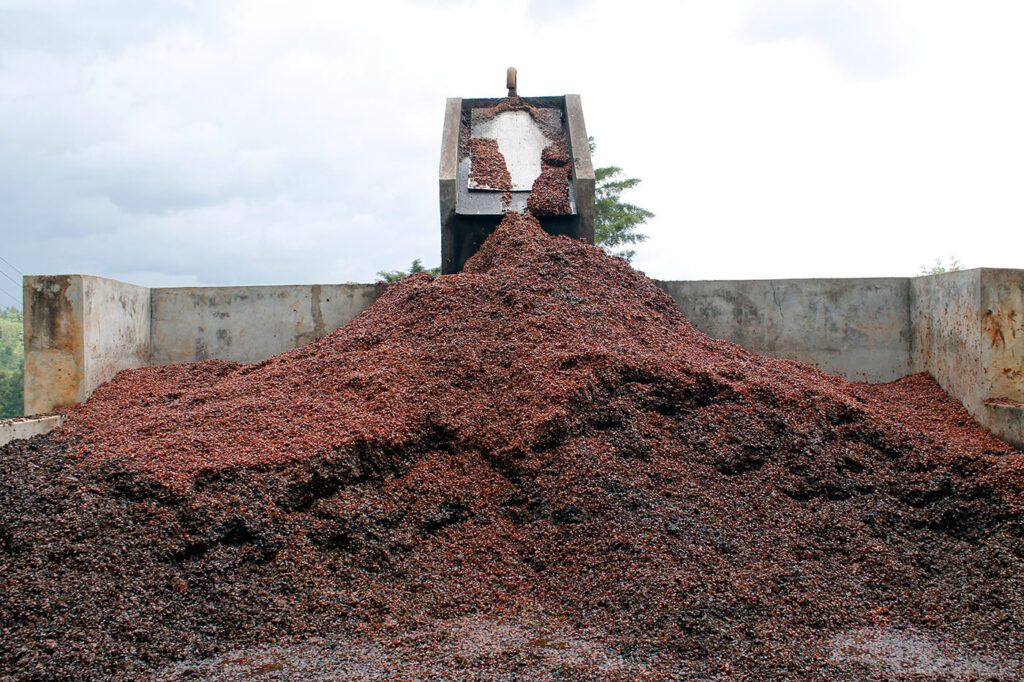
The notion of “single variety coffee” in Kenya has transformed into a “Kenyan Heirloom”. It is a bold statement, not to be confused with Ethiopian coffees, yet it has gradually progressed to such status. Like its neighboring country Ethiopia, the term “heirloom” is a “collective” name for both identified and non-identified varieties. It is also a common practice to “mix” lots in Ethiopia, yet the “mix” occurs earlier in the chain of events—namely unconscious picking by the producers based on what coffee trees are present on their land. At times, some knowledge of specific plants on the producer’s own land is passed on by ancestors or in-depth botanic knowledge.
Furthermore, the incentive to grow, ferment, and sell coffee for single farmers has significantly degraded. Farmers are more prone to sell their land to international real-estate agents because the production of coffee is not a lucrative business. Over the years, Coffea Circulor has seen this remarkable consequence. When the situation escalates, the washing stations that buy the cherries from single and smallholder societies will have less influx of farmers bringing coffee cherries to the processing stations. This leads to diluted lots and questionable quality. This is also a paradox since one could argue the interest in coffee has increased over the past decade while farmers give up their land. Likely, the interest in coffee is inherent but too many people in the coffee value chain who want their cut push the final price to a record low for the people who do the groundwork.
Sorting & Processing Coffee in Kenya
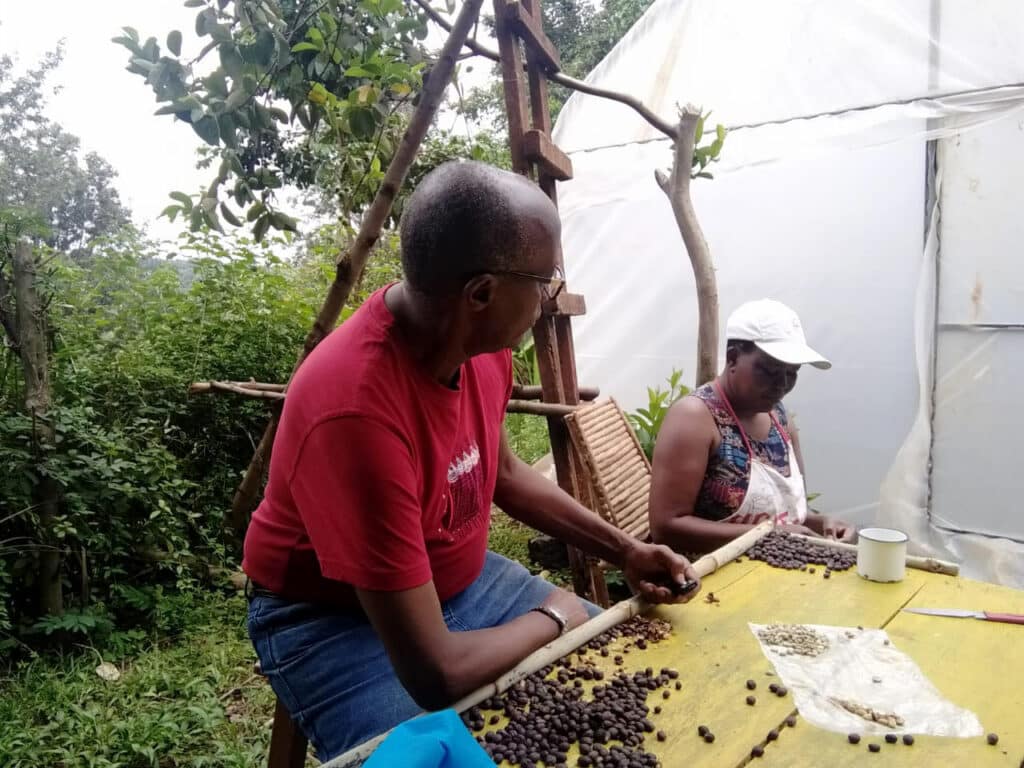
The Kenyan sorting mechanism of coffee as a grain is well established with its AA, AB, PB, etc. grades. However, there is no particular variety isolated approach or focus before reaching the sorting station and size-sorting. In addition, processing station workers are (mostly) instructed to quickly inspect cherries via visual cues, namely sort out possible greens and slight anomalies. Even if particular small-scale producers harvest and bring a specific variety to stations, it is often “mixed” and not processed separately. This is also due to processing small-scale or single lots that are too small to be cared for. Another straightforward reason is that much more attention is needed for that particular lot to be processed separately. Attention means time and time is money. Namely, it has to be sorted, de-pulped, fermented in a dedicated water tank, dried in parchment on dedicated raised beds, and milled separately. Each stage individually requires meticulous attention and responsibility, traceability, and dedicated staff. With the incentive to produce quantity before quality, this is where we are in 2022 and this is what has taken the center stage in our research and implementation.
While some people notice the sensory experience from Kenya “is not tasting as before” (the notion of “black currant” is absent, something that has carried the Kenyan signum), it is mainly as described the result and effect of underpaid coffee producers. With no incentive provided to produce high-quality coffee and focusing on quantity based on only picking cherries, cooperatively owned processing stations collect available coffee cherries and “mix them in one pot”. With no reference to ratios of the varieties being a key reason, there can be many more that go beyond our knowledge. Regardless, it is alarming and must be addressed by acknowledging quality coffee production requires attention and understanding from everybody—even end-consumers (both retail and wholesalers). Part of this is our developed Customer Expectancy Price (CEP) and True Development Cost (TDC).
Coffea Circulor is transforming the classic Kenyan coffee harvesting, fermentation, drying, and trade model which has traditionally been focused on wet fermentation and coffee acquisition of processing stations. Since 2006, we have actively been working in Kenya to establish an open trade platform anchored in a solid pricing model based on the perception of the quality of the coffee. Transparency in Trade, Pricing, and Quality was born in Kenya with principles rooted in our past work in the United Nations Environment Programme/GRID. Today, this is a pseudo standard that is taken and used by people in the industry, however only as a sign of marketing with respect to “transparency” while no notion of “real work” or contribution is stated. At times, “transparency” is confused with “stating the origin of the coffee”.
Results
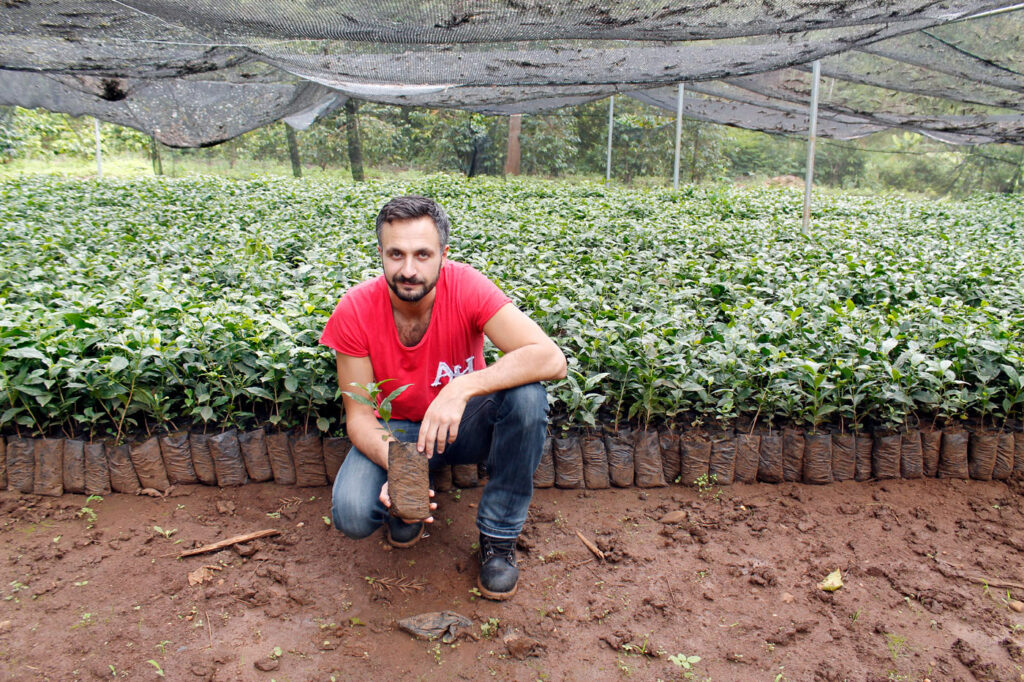
In the past and present, significant research has been conducted on how the coffee cherry affects the grain. The entire ambition and implementation rest on an approach where we primarily focus our efforts on developing a highly nutritious coffee cherry as a final product and thinking about the coffee cherry as the primary objective rather than the coffee (grain) as the final product.
Our mission in 2021 was to additionally tackle the observed challenges spanning back more than a decade. The term “coffee is a fruit” takes on a new meaning with our ambition to imbue the coffee with flavors and our previous recorded knowledge and study of the nutrients of the coffee cherry. The result is something “for the people” and also “for the people of Kenya” where we show what is possible to achieve.
Key findings and executive summary from the production that has been conducted over the last few years:
- Implementation of a multiple variety isolation (MVI) strategy where several Kenyan varieties were explicitly picked and fermented separately, in particular SL28, Batian, and Ruiru 11.
- Internal infrastructure (test, analysis, and drying facility) has been built, and knowledge and awareness have increased propelling Kenyan coffee production into new temporal interlude. Completely eliminated any use of water in our natural-based fermentation formulas. Measuring the occurrence of defects pre- and post-harvest for each isolated variety and its effect on production.
- Residual products, mainly dried cherry (cascara) are both recycled in the upcoming seasonal production and upcycled in the current inline production, namely giving way for re-nurturing soil and producing new key products based on the coffee cherry.
- Reached out to neighboring coffee producers to enlighten and provide incentives to continue to grow and produce coffee based on our previous and current Kenyan operations and observations.
- Established a knowledge-sharing program with farmers in Nyeri to further upscale production and experiments.
- Implemented a Payments for Ecosystem Services (PES) model which extends our production areas to include additional coffee producers who pick and provide coffee cherries based on specific criteria.
- Employed several co-workers and established a new entity in Kenya, Coffea Circulor Kenya Ltd.
- Instituted self-sufficiency with internal financial funding, rendering staying true to our developed True Development Cost (TDC) pricing model. This model will and must be utilized and understood by parties entering the later part of the coffee value chain such as for example whole entities and end customers. This will be rendering a CEP (Customer Expectancy Price) obsolete in comparison to ”other Kenyan offerings” on the market and the perception of how Kenyan coffee is priced to a final customer.
- Reduced the TDC by 50% from previous year’s offering due to efficiency and optimization across the project scope.
- With the 2021 year production, by fully implementing our True Development Cost (TDC) versus Customer Expectancy Price (CEP) for the entire collection of proprietary developed coffees, this range of coffee will not be able to be offered at an “expected price” that could be considered being “standard” for an origin.
Safe to say, Coffea Circulor is still recognized as “a coffee roaster” only, yet 50% of our time is spent on pure logistics. That does not mean we are unable to roast coffee – there are multiple achievements that anchor our ability to do so. As above states, more time, energy, and resources are put on production rather than the standard of the “coffee roasting business” which is in essence “receiving coffee on a doorstep, watching it tumble around and change color in a coffee roasting machine for 10 minutes, pack the coffee, make nice images on Instagram and sell.” The “real work” is happening “on the ground”.
Coffea Circulor produces the following coffees with proprietary processing formulas:
- The Isolated / Standalone Kenya varieties-series: Ruby Isolated Batian Natural NXOcclusio Isolated Ruiru 11 Natural Hypoxia NHXOrigo Isolated SL28 Natural Hypoxia NHXOxyco Isolated Batian Coffee Cherry/ORAC-Centered CCXOrdo Isolated Ruiru 11 AA Washed Dry Fermentation WDXOuto Isolated SL34 AA Washed WXOuto Isolated SL34 PB Washed WXOrtho Isolated Batian Natural Hypoxia NHX
- The Mixed / Orbi-series: Orbi Mixed Natural Natural NXOrbi Mixed AA Washed WXOrbi Mixed AB Washed WXOrbi Mixed PB Washed WX
The Pull & Pour Coffee Club is offering a custom set of Coffea Circulor coffees as their offer to club members. The set includes the following coffees and cascara which highlight particular fermentations and varieties:
- Oxyco Isolated Batian Coffee Cherry/ORAC-Centered CCX: Recently also used by Ellen Chen to place 2nd in the Indonesian Brewers Cup, a competition highly recognized by competitors only using Geisha-varietals.
- Ortho Isolated Batian Natural Hypoxia NHX: Recently used by Simen Andersen placing 1st in the Norwegian Brewers Cup.
- Ordo Isolated Ruiru 11 AA Washed Dry Fermentation WDX: This fermentation formula brings some means of Geisha-characteristics to the Isolated Ruiru 11 varietal – a varietal considered ‘inferior’ to the SL variations.
- Outo Isolated SL34 AA Washed WX: This fermentation formula is considered the traditional Kenyan methodology and is built for mass production. This coffee will also highlight the roasting ideology of Coffea Circulor so that it can be ‘compared’ to previous other Kenya encounters one might have had.
- Afterlife: The coffee cherry (cascara) with a groundbreaking ORAC score of (426,242 ± 85,248) μmol Trolox equivalent/kg.
If you are interested in learning more about coffee in Kenya and the work Coffea Circulor is doing, please check out these additional articles:
